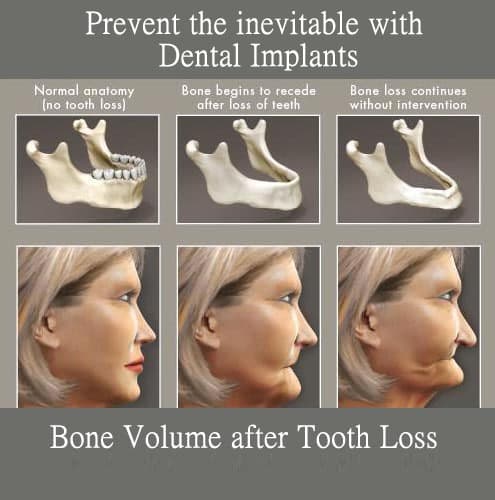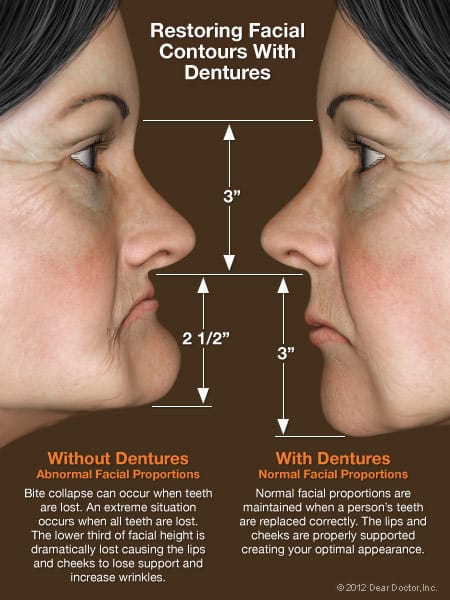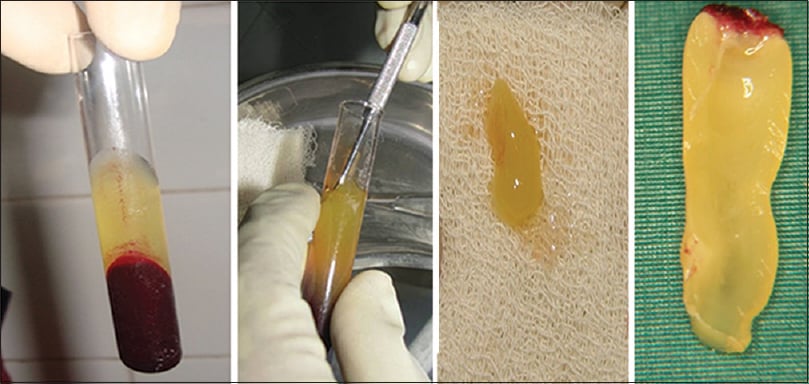What is a Bone Graft in Dental Implants?
Bone grafting is sometimes necessary to get dental implants but not always. It depends on whether or not there is enough bone to support a replacement implant root. Think of an implant as a root replacement and bone as what holds the root into the mouth. If there is not enough bone for an implant to go into, a graft will be necessary. It is that simple. If you have enough bone for an implant, then you do not need a bone graft (unless there is a cosmetic consideration).

Needed implant bone graft
25 Years of Dental Implant Experience
Bone and Gum Grafting Improves Implant Success
There can be cases where grafting and tissue regeneration procedures can be improve results. When teeth are lost, the gum and bone tissue is lost and holes and spaces around teeth can develop. Grafting can fill these holes and reshape the tissue to prevent chronic jaw infections food from trapping in the gums. Food trapping can cause gum disease, bad smells not to mention annoying food accumulations around teeth.
Bone Grafts are often necessary for implants
But it may not be that simple. There are different situations where a bone graft is necessary. There are also other reasons why a graft may be necessary or advisable. “Advisable?” Some dental surgeons have different approaches to regenerating and building bone too. In a given situation, one surgeon may do a graft while another may not do a graft. Often times the end result is the same. So when is a graft really necessary?
Dental Bone Graft Before and After
When teeth are lost, much needed gum and bone tissue is lost. Once bone has been lost is can be very difficult to replace. Bone loss causes difficulty eating and causes premature wrinkling of the face and collapse of facial profile. See the bone graft before and after diagram above.

dentures vs dental implants 1
Bone loss can and effects of premature aging can be reversed with bone grafting and prosthetics such as dentures and full mouth dental implants.

Holistic Bone Graft Video:
When is Bone Grafting Necessary
a simple hole in the bone such as an area where a tooth has been removed. Bone defect where there is no damage beyond the tooth extraction site. This is referred to as a “simple vertical bony defect” that is a simple hole down into the bone that has 360 degrees of bone surrounding it. Imagine a water glass that can be easily filled with graft material. The best example of this kind of defect is a tooth extraction site. A graft in this case is called socket preservation if an implant is not placed.
Read More
biological bone graft 1
Grafting of Vertical Bone Defects
a simple hole in the bone such as an area where a tooth has been removed. Bone defect where there is no damage beyond the tooth extraction site. This is referred to as a “simple vertical bony defect” that is a simple hole down into the bone that has 360 degrees of bone surrounding it. Imagine a water glass that can be easily filled with graft material. The best example of this kind of defect is a tooth extraction site. A graft in this case is called socket preservation if an implant is not placed.
Block Bone Grafts for “Multi-wall” defect
a volume of bone damage where a large eaten-away volume of bone needs to be repaired. Imagine a water glass where a side or more of the glass has been broken off. The glass can no longer be easily filled. This bone defect is categorized by the number of bony walls missing and the amount of lost bone. This second more complicated bone loss needs a “block bone graft” and is a lot more complicated to repair. The use of a more expensive putty-like graft material and a membrane is necessary to perform this later kind of graft. The best example of this bone damage is a tooth extraction site where infection has spread from the tooth and eaten away a volume of bone surrounding the tooth. Sometimes bacteria can eat holes in the bone and into sinuses or out the cheek side or tongue side of the jaws.
Complicated Block Bone Graft
An area where a volume of bone has been lost and there is no hole or “defect.” There just is not enough bone to put an implant root into. These can be the most difficult if not sometimes impossible bone regeneration cases. Basically to grow bone where there is not any. Good luck, but it can be done.
Bone graft materials
- Synthetic material
- Human bone collected from the patient. This called an autograft
- Human bone collected from a cadaver. This is called an allograft
- Animal bone. Xenograft is what this graft is called.
- PRF or platelet rich fibrin bone stimulation procedures
- Or a combination of all the above
PRF is the only Holistic Bone Graft Material
All the above materials are osseoconductive not osseoinductive except PRF. That is why PRF is called the biological bone graft material. Because it literally stimulates bone cells to grow more bone. PRF contains high concentrations of bone growth factors called bone morphogenic protein or BMP. BMP is the bodies signal to turn on bone growth. PRF is a very versatile material because it can be used as a graft material or a membrane.
Are bone grafts necessary when replacing teeth?
Possibly. You will need to be evaluated by an implant dentist. You will need to take a 3D conebeam X ray to determine if you have enough bone volume to get a tooth implant. If you do not have enough bone to stabilize an implant, then you will need a bone graft
Full Mouth Implant Cases:
Cases where many teeth are being removed and many implants are being placed will definitely need bone grafts. Such as complete full mouth dental implants. Some full arch implant cases can be designed to avoid a lot of expensive time consuming bone grafting. All on 4 dental implants is an approach to permanent implant teeth where a full one-piece set of upper zirconia teeth can be installed onto 4-6 dental implants. The strategy is to place the implants where there is bone and avoid sites where more difficult bone work is needed.
Are bone grafts needed when teeth are removed?
If you want to replace the tooth with a dental implant in the future, it is advisable to get a bone graft to prevent jaw bone loss. The best time to get a dental implant is usually at the time of tooth removal. Sometimes immediate dental implant surgery is not possible due to pain, swelling and infection. Delayed implant surgery is an implant 1-4 weeks after tooth removal. Delayed implant surgery is necessary when infection makes immediate surgery impossible.
Does bone grafting work well?
Yes, especially with new novel platelet rich fibrin PRF bone procedures.
How Much does a bone graft cost?
Anywhere from $400 – $3000 dollars. It depends on the size, shape and the health of the bone remaining. Sometimes where bone is very little and near the sinus, grafting can be very difficult with sinus lift bone graft surgery and expensive.
Schedule Consultation


 (301) 421 1996
(301) 421 1996 burtonsvillesmiles@gmail.com
burtonsvillesmiles@gmail.com
